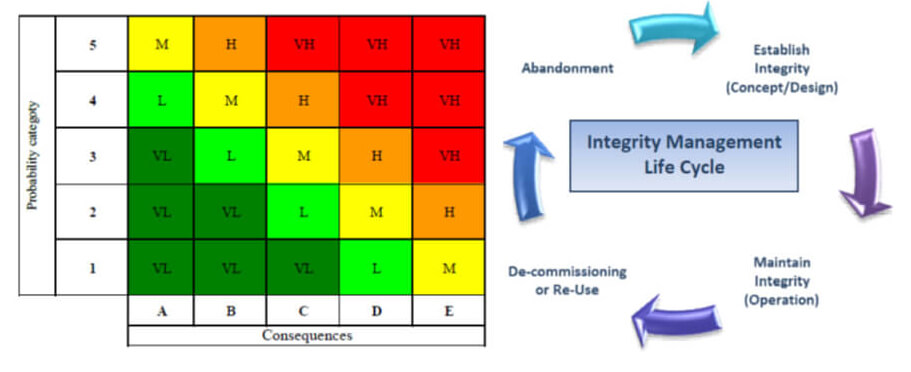Risk Based Integrity Management
Risk-based approach is now a well accepted method in the industry for managing integrity of the oil and gas systems. DNV RP-F116, Energy Institute guideline and ISO/ASME are amongst available procedures developed based on the risk-based approach.

At Z-Subsea we assist our clients by providing risk-based integrity management following and providing expertise in all the steps below:
- Itemizing large assets into smaller sub assets and components
- Identifying threats and their associated failure mechanisms for each component employing analyses such as Failure Modes and Effect Analyses; FMEA or Failure Modes Effects and Criticality Analyses; FMECA
- Calculation of probability and consequences of failure (Qualitative or Quantitative)
- Calculation of Risk
- Construction of a project-specific Risk matrix incorporating client’s corporate risk matrix
- Highlighting high risk areas require remediation (design alteration, operational change and/or more frequent inspections).
- Running Risk Assessment workshop inviting client’s technical representatives in order to finalizing an acceptable Risk matrix specific to the project.
- Determination of inspection intervals for the assets of interest as an ongoing process.
- Issuing project-specific integrity management reports summarizing the outcome of the Risk assessments
- Development and implementation of Inspection, monitoring, maintenance and repair philosophies.
- Development and implementation of the Pigging Feasibility study reports
- Audit and review of the produced integrity management reports should any change in operation and service is identified (Management of change)
At Z-Subsea we see the added value of engaging with our clients on the integrity management subject from the conceptual project phase as we believe that our clients will benefit economically as well as technically post incorporating outcome of the risk-based integrity management (IM) performed during the conceptual phase into the design stage as any design change at early stages is deemed to be less expensive, technically feasible.
